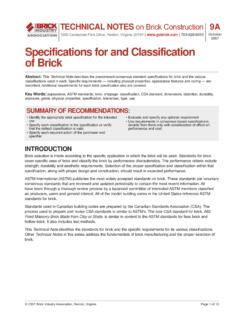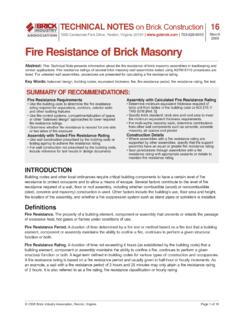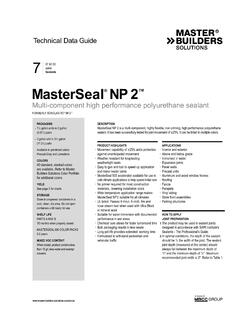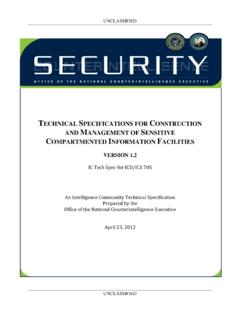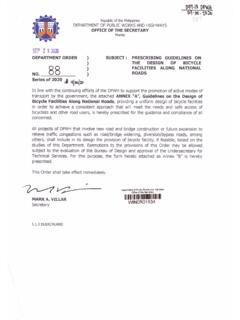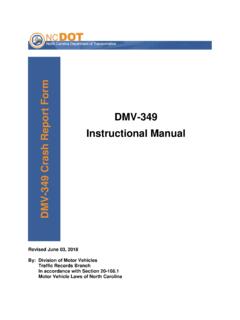Transcription of Specifications for and Classification of Brick
1 9 ATECHNICAL NOTES on Brick Construction October 20071850 Centennial Park Drive, Reston, Virginia 20191 | | 703-620-0010 Specifications for and Classificationof Brick Abstract: This Technical Note describes the predominant-consensus standard Specifications for Brick and the various classifications used in each. Specific requirements including physical properties, appearance features and coring are described. Additional requirements for each Brick specification also are covered. Key Words: appearance, ASTM standards, Brick , chippage, Classification , CSA standard, dimensions, distortion, durability, exposure, grade, physical properties, specification, tolerances, type, use.
2 SUMMARY OF RECOMMENDATIONS: Identify the appropriate Brick specification for the intended Evaluate and specify any optional requirement use Use requirements in consensus-based Specifications ; Specify each Classification in the specification or verifydeviate from them only with consideration of effect onthat the default Classification is valid performance and cost Specify each required action of the purchaser andspecifier INTRODUCTION Brick selection is made according to the specific application in which the Brick will be used. Standards for Brick cover specific uses of Brick and classify the Brick by performance characteristics. The performance criteria include strength, durability and aesthetic requirements.
3 Selection of the proper specification and Classification within that specification, along with proper design and construction, should result in expected performance. ASTM International (ASTM) publishes the most widely accepted standards on Brick . These standards are voluntary consensus standards that are reviewed and updated periodically to contain the most recent information. All have been through a thorough review process by a balanced committee of interested ASTM members classified as producers, users and general interest. All of the model building codes in the United States reference ASTM standards for Brick . Standards used in Canadian building codes are prepared by the Canadian Standards Association (CSA).
4 The process used to prepare and revise CSA standards is similar to ASTM s. The sole CSA standard for Brick , A82 Fired Masonry Brick Made from Clay or Shale, is similar in content to the ASTM standards for face Brick and hollow Brick . It also includes test methods. This Technical Note identifies the standards for Brick and the specific requirements for its various classifications. Other Technical Notes in this series address the fundamentals of Brick manufacturing and the proper selection of Brick . 2007 Brick Industry Association, Reston, Virginia Page 1 of 13 Brick Specifications Depending on its use, Brick is covered by one of several Specifications .
5 See Table 1. Because firebox Brick , chemical resistant Brick , sewer and manhole Brick , and industrial floor Brick are special uses, they will not be addressed in this Technical Note. TABLE 1 Specifications for Brick Title of Specification ASTM Designation1 CSA Designation2 Building Brick C 62 Facing Brick C 216 A82 Hollow Brick C 652 A82 Thin Veneer Brick Units Made from Clay or Shale C 1088 Pedestrian and Light Traffic Paving Brick C 902 Heavy Vehicular Paving Brick C 1272 Ceramic Glazed Structural Clay Facing Tile, Facing Brick , and Solid Masonry Units C 126 Glazed Brick , Single Fired C 1405 Firebox Brick , Residential Fireplaces C 1261 Chemical-Resistant Masonry Units C 279 Sewer and Manhole Brick C 32 Industrial Floor Brick C 410 1.
6 ASTM International, 100 Bar Harbor Drive, West Conshohocken, PA 19428. 2. Canadian Standards Association, 5060 Spectrum Way, Suite 100, Mississauga, Ontario, L4W 5N6 Canada. Beginning with the 2007a edition of ASTM C 216, an appendix has been added. The appendix is designed to explain the specification, noting subtleties and relationships that might not otherwise be clear. In many instances the use of Brick is similar to the title of its ASTM specification. Facing Brick Facing Brick are intended for use in both structural and nonstructural masonry, including veneer, where appearance is a requirement. Hollow Brick Hollow Brick are used as either building or facing Brick but have a greater void area.
7 Most hollow Brick are used as facing Brick in anchored veneer. Hollow Brick with very large cores are used in reinforced brickwork and contain steel reinforcement and grout. Building Brick Building Brick are intended for use in both structural and nonstructural brickwork where appearance is not a requirement. Building Brick are typically used as a backing material. Thin Brick Thin veneer Brick have normal face dimensions but a reduced thickness. They are used in adhered veneer applications. Paving Brick Paving Brick are intended for use as the wearing surface on clay paving systems. As such they are subject to pedestrian and light or heavy vehicular traffic. Glazed Brick Glazed Brick have a ceramic glaze finish fused to the Brick body.
8 The glaze can be applied before or after the firing of the Brick body. These Brick may be used as structural or facing components in masonry. | Brick Industry Association | TN 9A | Specifications for and Classification of Brick | Page 2 of 13 CLASSIFICATIONS There are several classifications used in each standard. Classifications include grade, class, type, application and use. The criteria for these classifications may include exposure or use conditions; appearance items; physical properties needed for performance; tolerances on dimensions and distortion; chippage; and void area. Brick qualify for a particular Classification based on their properties after manufacturing.
9 While most Brick can be manufactured to attain all the attributes desired by a user, certain attributes may be dictated by the production method, durability Classification or appearance Classification designated by the user. For example, a molded Brick cannot be made to meet the Classification for the tightest dimensional tolerances since the production method uses a higher percentage of water that may result in greater shrinkage. Brick manufactured by the extrusion process can be made to meet the Classification for tight or loose dimensional tolerances. When specifying Brick each Classification should be designated. Some ASTM Brick Specifications default to a certain Classification if it is not designated.
10 The default Classification may not be suitable for the intended use. Table 2 contains a listing of the classifications in ASTM and CSA Brick Specifications . TABLE 2 Classifications in Specifications for Brick Classification Durability Appearance Void Area Use ASTM Specification C 62 Building Brick Grade None None None C 216 Facing Brick Grade Type None None C 652 Hollow Brick Grade Type Class None C 1088 Thin Veneer Brick Grade Type None None C 902 Pedestrian and Light Traffic Paving Brick Class and Type Application None Type C 1272 Heavy Vehicular Paving Brick Type Application None Type C 126 Ceramic Glazed Facing Brick None Grade and Type None None C 1405 Single Fired Glazed Brick Class Grade and Type Division None CSA Specification A82 Fired Masonry Brick Made from Clay or Shale Grade Type None1 None 1.
